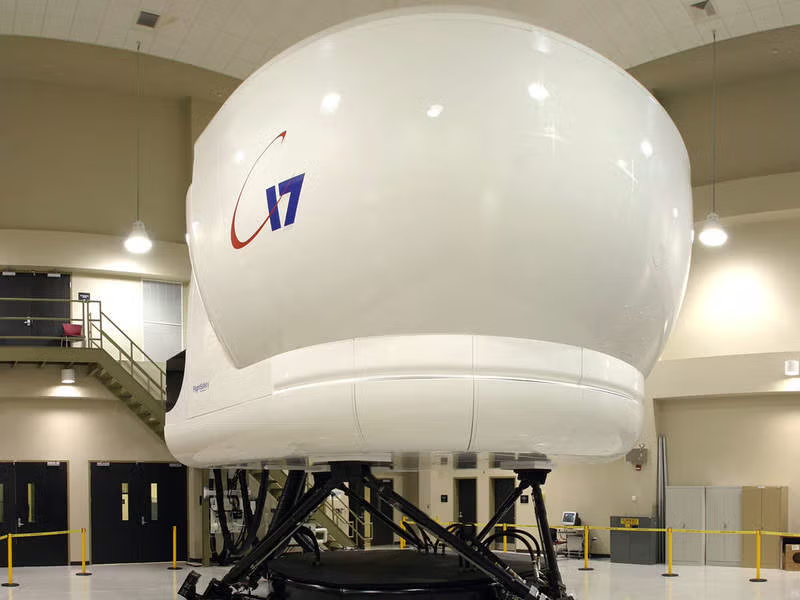TMS C-17 Technology: Systems Overview

The Boeing C-17 Globemaster III is a large military transport aircraft developed for the United States Air Force (USAF). It plays a crucial role in strategic airlift missions, tactical airlift deployments, and medical evacuations worldwide. Designed to operate from runways as short as 3,500 feet, it offers unmatched versatility and performance.

Design and Development
The C-17 was designed by McDonnell Douglas during the 1980s and first flew in 1991. Following its merger, Boeing continued production. The USAF took delivery of its first C-17 in 1993. The program aimed to replace existing aircraft like the C-141 Starlifter, ensuring improved efficiency and increased payload capacity.
Powered by four Pratt & Whitney PW2040 turbofan engines, each providing around 40,400 pounds of thrust, it maintains excellent power-to-weight ratio. Its aerodynamic design, including a supercritical wing, enhances its fuel efficiency and maneuverability. The advanced lift systems enable steep glide sloping and rapid descents, essential during tactical operations.
Dimensions and Capacity
The C-17 has an impressive wingspan of 169 feet and a length of 174 feet. It features a high wing design with winglets, which are crucial for aerodynamic efficiency. The aircraft boasts a maximum payload capacity of approximately 170,900 pounds, allowing it to carry a vast array of equipment.
Its cargo compartment is 88 feet long, 18 feet wide, and 12 feet high. This space accommodates up to three UH-60 Black Hawk helicopters or a single M1 Abrams tank. It can also transport large numbers of troops, with seating for 102 paratroopers, making it invaluable for rapid deployment scenarios.
Aviation Systems
The avionics suite of the C-17 is both sophisticated and user-friendly. It involves a fly-by-wire control system, which replaces conventional manual flight controls with electronic interfaces. Pilots benefit from a heads-up display (HUD), improving situational awareness during all phases of flight.
The aircraft employs advanced communication systems, including secure voice and data links for real-time mission updates. Navigation is supported by a GPS/INS system, allowing precise monitoring of position, speed, and direction. An automatic flight control system aids in maintaining stability under various flight conditions.
Operational Roles
One of the C-17’s primary functions is strategic airlift. The aircraft can transport equipment, supplies, and personnel across vast distances rapidly. Its ability to land on austere airfields enhances strategic value, as it can deploy resources directly into combat zones.
Tactical airlift is another significant role. The C-17 facilitates intra-theater transportation, distributing troops, vehicles, and supplies between regional airbases. Its short takeoff and landing (STOL) capability is vital for operations in confined areas or rugged terrains.
Medical evacuation (MEDEVAC) missions are where the C-17’s flexibility shines. It carries specialized medical equipment, allowing it to serve as an airborne hospital. The ability to fly non-stop from conflict zones to care facilities globally saves lives and enhances morale.
International Reach
While the USAF remains the largest operator, international partnerships secure the C-17’s global footprint. The Royal Air Force, Royal Australian Air Force, and NATO operate these aircraft, reinforcing defense capabilities and humanitarian missions worldwide.
The aircraft’s interoperability with allied forces ensures cohesive operations in multi-national exercises and operations. The C-17 also supports disaster relief operations, providing essential goods during emergencies like earthquakes and floods. Its versatility in diverse roles underlines its value beyond military engagements.
Maintenance and Upgrades
Maintaining the C-17 involves regular inspections and modernization efforts. The USAF conducts continuous fleet-wide upgrades to enhance functionality, security, and efficiency. Integrating newer avionics and communication systems keeps the aircraft at the cutting edge.
Recent upgrades focus on improving fuel efficiency and reducing operational costs. The USAF and Boeing consistently work on optimizing engine performance and developing maintenance techniques that extend service life. These efforts ensure readiness and reliability, crucial for meeting mission demands.
Impact on Military Operations
The C-17 has dramatically influenced modern military logistics. It bridges the gap between strategic and tactical airlift, providing a flexible, rapid deployment platform. Its introduction modernized air mobility commands, offering unparalleled transport solutions.
Its influential role in operations like Iraq, Afghanistan, and Syria highlights its strategic importance. The ability to maneuver in complex geopolitical zones reinforces U.S. and allied dominance in air mobility operations. This operational agility remains essential for future combat scenarios.
The Future of Air Mobility
As air mobility continues to evolve, the C-17 will undoubtedly adapt to meet future challenges. Emerging defense strategies emphasize rapid, agile responses to threats. The C-17’s design accommodates technological improvements, allowing upgrades that align with evolving military requirements.
The development of successor models or complementary platforms may draw from the C-17’s successful elements. Concepts like increased automation, advanced materials, and hybrid propulsion systems may shape the future of airlift capabilities. The C-17 remains a cornerstone in today’s military aviation landscape.
Recommended Aviation Gear
David Clark H10-13.4 Aviation Headset – $376.95
The industry standard for aviation headsets.
Pilots Handbook of Aeronautical Knowledge – $25.42
Essential FAA handbook for every pilot.
As an Amazon Associate, we earn from qualifying purchases.
Subscribe for Updates
Get the latest articles delivered to your inbox.
We respect your privacy. Unsubscribe anytime.